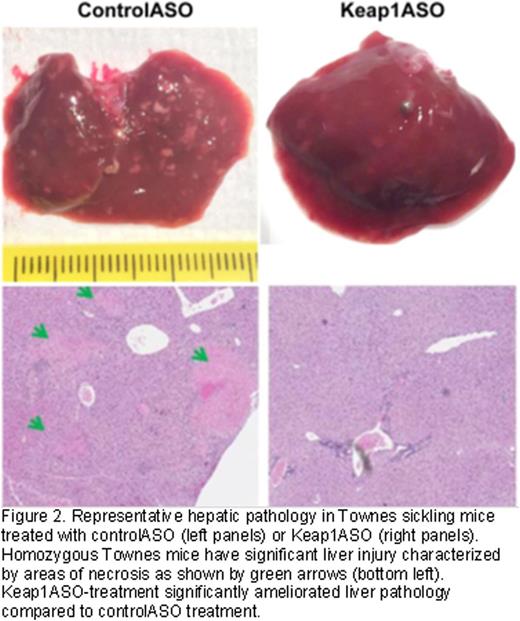Abstract
A great deal of evidence links the manifestations and associated morbidities of sickle cell disease (SCD) to ischemia/reperfusion injury and increased oxidative stress. Recent studies using humanized SCD mice show that thermal and mechanical hyperalgesia is associated with microglia activation and increased oxidative stress in the spinal cord, which are all ameliorated by treatment with antioxidants. In kidneys of SCD mice, at baseline, there is elevated heme content and increased oxidative stress (increased lipid peroxidation and severe medullary congestion). Synthesis inhibition of the antioxidant glutathione, precipitates increased sickling in kidney cortex and medulla. In SCD patients presenting with acute chest syndrome, researchers have shown that F(2)-isoprostanes, markers of oxidative injury, are significantly elevated and decline to baseline levels after exchange blood transfusions. In sickle cell patients, plasma levels of pentosidine and CML, established biomarkers of oxidative stress, correlate with the hemolytic rate, endothelial activation (adhesion molecules levels), and with the presence of hemolysis-related complications. Taken together these studies indicate that oxidative stress plays a significant role in SCD-related pain and organ injury. The transcription factor nuclear factor erythroid 2-related factor 2 (Nrf2) regulates the expression of genes involved in cellular defense against oxidative stress and is constitutively inhibited by Kelch-like ECH-associated protein1 (Keap1). With increased oxidative stress, Keap1 is inactivated and Nrf2 stabilizes, translocates to the nucleus, and binds to antioxidant response elements (ARE) within promoters of genes that increase antioxidant capacity. In two recent studies, researchers have shown that genetic and pharmacologic inhibition of Keap1 ameliorates inflammation and liver and lung damage in SCD mice. Therefore, this pathway holds great promise as a possible therapeutic target in SCD. Here, we investigated the feasibility of using an antisense oligonucleotide (ASO) against Keap1 (Keap1ASO) to knockdown expression of Keap1 in SCD mice. Keap1ASO and controlASO were obtained from IONIS Pharmaceuticals (ionispharma.com).We then treated homozygous Townes (sickling) SCD mice (8-12 weeks old) with 40mg/kg Keap1ASO (n=4) or controlASO (n=4). Both controlASO and Keap1ASO were administered subcutaneously, once a week for four weeks. We showed that a 4-week treatment with Keap1ASO yielded significant Keap1 mRNA expression knockdown (Figure 1). Further, the knockdown of Keap1ASO was associated with remarkable improvement in liver injury shown by significant reduction in areas of liver necrosis in Keap1ASO-treated compared to controlASO-treated sickling mice (Figure 2). Further, these effects of Keap1ASO were not associated with significant changes in white or red blood cell counts, liver glutathione levels, transaminases or total bilirrubin. These findings are in keeping with those of others showing that genetic inhibition of Keap1 ameliorates organ injury in SCD mice without affecting erythropoiesis. Taken together, these preliminary data support the hypothesis that oxidative stress has an important role in the pathobiology of organ injury in SCD mice and that knockdown of Keap1 mRNA with Keap1ASO treatment ameliorates organ damage in SCD mice.
Lee:Ionis Pharmaceuticals: Employment, Equity Ownership. Hung:IONIS Pharmaceuticals: Employment, Equity Ownership. Quezado:IONIS Pharmaceuticals: Research Funding.
Author notes
Asterisk with author names denotes non-ASH members.



